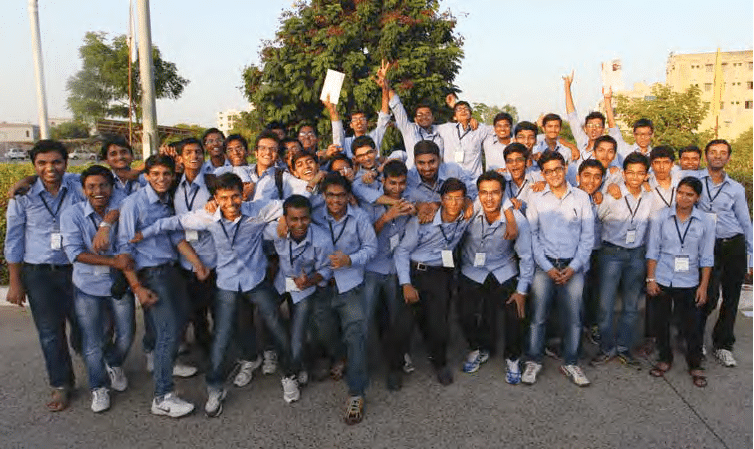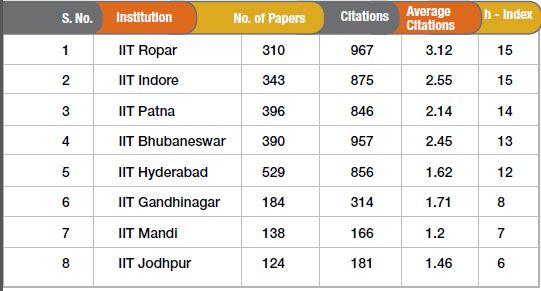
Eight new IITs came into existence in 2008, making quality education available to more students. Unfortunately, the new IITs have been receiving a lot of flak for not being on par with their older brethren in terms of faculty, infrastructure and students, and tarnishing the brand IIT. Anushi Agrawal of Elets News Network (ENN) finds out how fair is it to compare the six-year-old institutes with decade-old institutions and the advantages that new IITs have in experimenting and inducting new ideas to achieve excellence
Indian Institutes of Technology (IIT), the premier institutes for engineering in the country, figure prominently among Indian higher education institutions known outside the country. They are internationally respected for the quality of their teaching and for the quality of their graduates. They have one of the most expansive selective processes in the world, where more than 500,000 students take the entrance exams each year. The Indian education system rests its hopes on them to break into the world college rankings, which has been an elusive dream for India till now.
Established in 1950 in Kharagpur with more centers in Mumbai (1958), Chennai (1959), Kanpur (1959) and Delhi (1961), the government of India cleared the establishment of eight more IITs in 2008. The IITs were approved to be set up in Bihar (Patna), Rajasthan (Jodhpur), Odisha (Bhubaneswar), Andhra Pradesh (Hyderabad), Gujarat (Gandhinagar), Madhya Pradesh (Indore), Himachal Pradesh (Mandi) and Punjab (Ropar) at a total cost of `6080 crore for 6 years period with the aim of increasing the output of high quality Engineering and Science graduates, post graduates and PhDs, teachers for Engineering and Science subjects at College/University level and research and development and Intellectual Property generation in Engineering and Science,. Approval was also granted to form societies for creating legal entities for new IITs. It is to be noted that 90 faculty positions were sanctioned for each of the new IITs.
It has been a roller coaster ride for the eight new IITs since then. They have had their share of accomplishments and pitfalls over the years. While some of the new IITs have had a good placement and boast of high quality research publications, foreign tie-ups, quality students, there have been some disappointments as well. Even after six years, these institutes face the problems associated with establishing new institutes, like poor infrastructure, location disadvantage, shortage of experienced faculty, and difference in average packages offered. But the most daunting task for new IITs is to carry the baggage of Brand IIT. In six years, the new IITs are expected to be on par with the 50-year-old institutions. “The current buzzwords in higher and technical education are access, affordability, equity, excellence, expansion, inclusion, quality, etc., which are largely absent during the initial years. While it will take some more time for the new IITs to evolve into mature centres of excellence, they have several things going for them,” says Dr R Natarajan, former Director, IIT Madras and former Chairman, AICTE. Undoubtedly, IITs have been producing highly skilled and competent professionals, researchers and academicians that have dazzled the world with their brilliance. This is the single most important reason which attracts a large number of students to these institutes. But when the students start having the same expectations from the new IITs, it is a cause for concern. The new institutes are on a bumpy ride to achieve the level of IITs’ excellence, as they were set up by an Act of Parliament, without any ground work.
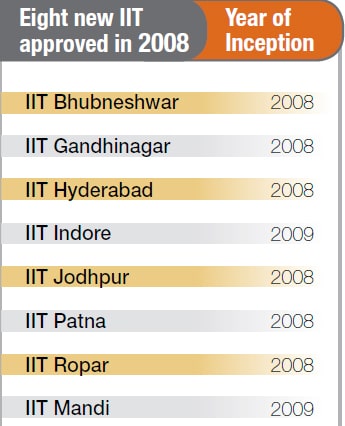
Where lies the problem?
When the government declared in 2008 that it would open eight new IITs, academicians criticized the move as well as the timing of the declaration. It was just before the general elections in 2009 when eight new IITs were announced. The government received flak from many quarters for its decision to open IITs without any planning. Prime Minister Manmohan Singh’s own scientific adviser CNR Rao called it a disaster. “Opening so may IITs in one year is a disaster. I had no idea that so many IITs have already come up in our country. This is not a play. To open IITs, you need proper planning. There are makeshift campuses and some are even attending classes in old IITs,” said the renowned scientist in 2008 while attending an event at the Federation of Indian Chambers of Commerce and Industry (FICCI). Union Minister Kapil Sibal, who was Minister for HRD, Science and Technology and Telecom in 2011 also pointed out that the eight new IITs that were permitted to set up in 2008 do not have the necessary infrastructure and are not up to the mark, making it difficult for the country’s prestigious institutions to retain faculty.
The Minister blamed the state governments for not allotting the required land for setting up permanent campuses for these institutions. Therefore, problems for new IITs started right from their inception. Since the establishment of new IITs was not backed by proper planning and ground work, they continue to suffer its implications even today. As the institutes were opened in a rush, no planning was done for providing quality intellectual and infrastructural resources. “Some of the new IITs suffer from problems like accommodation and working from multiple campuses. The policy has been implemented in a hurry. Now, it has become a double challenge for new IITs to manage the existing campus and overlook the progress of new campus. Some preparation should have been done before opening new IITs,” says a concerned Professor MK Surappa, Director, IIT Ropar. All the eight IITs are still functioning from temporary campuses and have not been able to get the permanent campus constructed because of several reasons like finalisation of land and delay in construction activity. This has hindered the growth plans of the institutes. Since they are working out of temporary campuses, it becomes difficult to provide accommodation to faculty members. “The new IITs, during the initial years, operated from temporary campuses, with many problems. Until the new campuses are fully developed, they will suffer from this disadvantage,” warns Dr R Natarajan.
All the IITs have begun the construction of their permanent campus and most will be completed within two years. Currently, most of the new IITs have infrastructural issues. Students complain of lack of proper space in classrooms, labs, library and sporting facilities. Some of them do not have sufficient accommodation facility for faculty which becomes an important concern as most of the new IITs are located in remote areas and the faculty is not comfortable travelling long hours every day to the campus. Setting up IITs in remote locations has proven difficult for the institutes. Commenting on the problem of being located in a remote area, Professor Surappa says, “Government should not start any institution of higher learning like IITs in remote locations. It is very disadvantageous. People should be able to fly in and fly out. At the same time, it would have been different if we would have been based in Chandigarh. The resources are very limited here. It slows down the process of growth of an institution.”
For the 12th Five-year Plan, government had allocated nearly 12,500 crore for the IITs, of which the new tech schools were to receive a little over ` 6,000 crore. But construction delays and rising cost of infrastructure developmentpushed the funding requirement of the new IITs alone to 14,000 crore
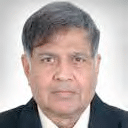 There will be comparisons between the older ones and the newer ones; this is inevitable. In a few years, say 3-5 years, the newer ones and the older ones will be more similar and the comparisons will be fairer
There will be comparisons between the older ones and the newer ones; this is inevitable. In a few years, say 3-5 years, the newer ones and the older ones will be more similar and the comparisons will be fairer
– Dr R Natarajan, Former Director,
IIT Madras and Former Chairman,
AICTE
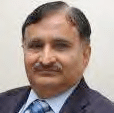 The policy has been implemented in a hurry. Now it has become a double challenge for new IITs, to manage the existing campus and overlook the progress of new campus. Some preparation should have been done before opening new IITs –
The policy has been implemented in a hurry. Now it has become a double challenge for new IITs, to manage the existing campus and overlook the progress of new campus. Some preparation should have been done before opening new IITs –
Prof MK Surappa,
Director,
IIT Ropar
Opening IITs in remote areas also affects their ability to hire good educators. As Dr R Natarajan points out, “For the faculty members, some of the major sources of need and attraction are, in addition to job satisfaction, a job for the spouse, a school for the children and a hospital for the parents. Until these are developed, either within the campus or in the vicinity, they will have to put up with much inconvenience.” Most faculty members are not ready do that, making it difficult for the new IITs to attract and retain talent. At the same time, senior professors from the older IITs are not willing to move to newer ones. “We look for teachers who have done research work, mentoring work, teaching, and take administrative responsibility. Such faculty, which is there in old IITs doesn’t move to new IITs. Lack of mobility of IIT faculty has further reduced the pace of development of new IITs,” says Professor MK Surappa.
Dr Sudhir K Jain, Director, IIT Gandhinagar feels, “Higher education in India generally and all IITs, new and old, are facing challenges in faculty recruitment. In our case, we have addressed the issue with a vibrant visiting faculty programme that brings faculty from all over the world. The only challenge we have in faculty recruitment is self-imposed, in that we are striving to hire only the best scholars for our institute.” Also Professor MK Surappa observes that “old IITs have a system in place, faculty take administrative roles as well. Our new faculty is not sure how to solve a particular problem and they turn to the director for the same which make the process slow.”
The new IITs attracted a good number of companies for their campus placement. But still “there is slight hesitation from company’s side in hiring from new IITs. The number of companies coming to older IITs like IIT-Delhi and IITMumbai are certainly more than what comes to our campus. There is a mental block in this regard. Moreover, there aren’t good hotels in Ropar and we have a modest guest house. Hence, recruiters have to put up in Chandigarh and travel to Ropar every day for the recruitment exercise, which is not very convenient for them,” observes Professor MK Surappa.
The six-year-old IITs have a huge name to live up to. There are misconceptions about the quality of students and faculty at these institutes. In truth, these institutes too admit the creamy layer of the students taking the entrance exams. The new IITs are part of the group that selects 10,000 students out of 500,000 appearing for IIT-JEE, so they too get the best of the lot. Moreover, each of the new IITs is being mentored by an older IIT so that the traditions and practices at all the IITs remain the same. Pointing out that the students from new IIT are at equal pedestal with the students of old IITs, Dr Sudhir K Jain says, “Nearly 10 percent of our graduating students from the first two batches are pursuing studies at some of the world’s top institutions. Nearly a third of our graduated students have studied abroad. On the placement side, well over 90 percent of students who registered for placement through our student placement office were satisfactorily placed. Leading companies, such as Ricoh, Infosys, National Instruments, GSFC, DRDO, Cognizant, Dover Corporation, Goldman Sachs, Texas Instruments, Tata Power, L&T, Eclerx have recruited our students because they recognise that something distinctive and different is taking place at IIT Gandhinagar.” It is a fact that only the students at the top of the heap get the opportunity to study in these institutes. “Admissions to the new IITs and the older ones are through the same JEE; for the more preferred branches, such as Computer Science and Engineering or Mechanical Engineering, the new IITs are getting top ranked students. The quality and qualifications of the faculty members are similar, the curricula and the Teaching- Learning-Assessment processes are comparable and the research culture and performance are similar,” says Dr R Natarajan. He also warns that “there will be comparisons between the older ones and new ones; this is inevitable. In a few years, say 3-5 years, the new ones and the old ones will be similar and the comparisons will be fairer.”
Eight new IITs that were permitted to set up in 2008 do not have the necessary infrastructure and are not up to the mark making it difficult for IITs to retain faculty
The way forward
For the 12th Five Year Plan (2012-17), the government has allocated nearly `12,500 crore for the IITs, of which the new schools are to receive a little over `6,000 crore. But construction delays and rising cost of infrastructure development has pushed the funding requirement of the new IITs to `14,000 crore. It is a long road ahead for new IITs before they can be on par with older siblings in terms of infrastructure and putting a basic system in place, but they have many things going for them. “The new IITs do not have any baggage or legacy issues. They have come into existence when technology is playing a significant role in technical education, such as the availability of several technology tools, learning resources and tech-savvy faculty members and students. Their (planned) campuses are more modern and are better planned. They have an ambition to be better than and different from the older ones,” says an optimistic Dr R Natarajan.
The new IITs need to leapfrog and achieve in few years what the older IITs have achieved in decades. Interestingly, the new IITs are better equipped to do it. Their new and permanent campuses have state-of-the-art facilities. They have the liberty and opportunity to innovate and experiment in establishing the new institute. “As a new institution, we are more nimble and flexible than older institutions. Naturally, we don’t have the same infrastructure and systems. But we have leveraged these to our advantage. For instance, onethird of our students who we send for studying abroad, or the nearly 15 to 20 per cent of the visiting faculty at the institute, add an exciting global dimension to the educational experiences of our students and faculty,” shares Dr Sudhir K Jain. He further adds proudly, “Three of our undergraduate students last year registered US patents. Nearly a third of them will get overseas experience. We offer exceptional compensation to our graduate students and upto `2 lakh to PhD students to present papers at international conferences. In addition, we offer $12,500 for a semester abroad for our PhD students. I believe very few institutes can match our educational experience and student support.”
The old IITs took almost five decades to prove their mettle. Now they have a system and hierarchy in place which makes it a little difficult for them to tackle fresh challenges or change their style of working. The new ones have the opportunity to deal with the problems, fresh ideas and initiatives. They should be aiming to break away and experiment with different strategies and not just copy the older IITs. Some innovation can indeed be seen in these institutes. The IITs at Gandhinagar, Mandi and Indore, for instance, are laying emphasis on interdisciplinary research and teaching. Those at Gandhinagar and Mandi are keen on academic diversity and the humanities, with courses on social sciences, music, arts, theatre, etc. The problem of faculty crunch can also be tackled if the faculty is given ample opportunities for research. They will also opt for a new IIT, irrespective of the remote location of the campus. The new IITs are also investing a lot of time and effort in developing their new campuses. They are enthusiastic about inducting new ideas into their campus buildings. IIT Gandhinagar takes extensive inputs from students in terms of designing the new campus and also orgainses picnics at the permanent campus’ construction site. Dr Sudhir K Jain at IIT Gandhinagar also emphasises on community outreach to help sensitize students on need to work towards betterment of underprivileged members of the society. IIT Jodhpur also desires to have a green and interactive campus and it’s quite possible for them to do so as their campuses are being built from scratch. Such changes are difficult to make for old institutes.
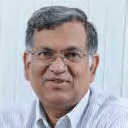 We have the advantage of the IIT brand and the IIT experience, as well as the nimbleness and the global context that allows us to dream big and bigger.-
We have the advantage of the IIT brand and the IIT experience, as well as the nimbleness and the global context that allows us to dream big and bigger.-
Dr Sudhir K Jain, Director,
IIT Gandhinagar
Clearly being new is not a disadvantage to these institutes but can rather provide an opportunity to innovate and experiment and help in leapfrog the years and bridge the gap between old and new IITs. If implemented well and executed diligently, the advantage of being new can actually put the new IITs ahead of their veterans. An enthusiastic Dr Sudhir K Jain said, “Our achievements and aspiration of becoming the best educational institute in India and among the best in world is possible because we are new. We have the advantage of the IIT brand and the IIT experience, as well as the nimbleness and the global context that allows us to dream big and bigger.” Going by the current rate of progress and enthusiasm among the members of new IITs, it is no wonder that they will come on par with the old one in matter of years. “New IITs are good as old ones. Eventually the performance and outcome of an institution will answer all the doubts and misconceptions. People will recognise the new IITs and verifiable data will answer all the queries,” says Professor MK Surappa. But new IITs should realise that their real competition is not the old IITs but the Ivy League institutions.
They should aim at making a mark in the world rankings for India. “We are laying the foundations with the quality of our faculty, the strategic development of our infrastructure, and the evolution of our institutional culture to aspire to be among the best in the world,” says Dr Sudhir K Jain. The way forward for new IITs is to go global and not be restricted to being on par with old IITs or being best in the country. Dr R Natarajan sums up on a positive note, “They should benchmark themselves with world class universities, and aim to match them and be better than them. All world class universities are researchfocused, they should create researchled institutions. They should establish partnerships with our strategic sectors, such as Space, Defence, Nuclear Energy, and the several industry sectors, in order that their academic activities are in sync with their needs.”







